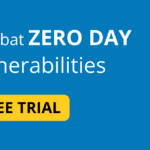Introduction to blockchain security
Several approaches are used by blockchain security to guarantee the secrecy and integrity of digital transactions. Data is encrypted using cryptographic methods to prevent unauthorized access. The danger of fraud is decreased by network users verifying transactions. Consensus protocols are used to maintain immutable records, which forbid modification. Additionally, safe user authentication is made possible via public and private keys, increasing system security as a whole. Regular upgrades and monitoring can strengthen defense against new threats. Finally, the integration of identification, consensus, and encryption creates strong security measures for blockchain, encouraging confidence and dependability in decentralized systems.
II-Fundamentals of Blockchain Technology

Digital ledgers that use blockchain technology are distributed and decentralized. At its core, it guarantees secure and open transactions among a network of computers. It uses consensus processes to verify transactions and cryptographic techniques to guarantee data integrity. A timestamped batch of transactions is contained in each block of the chain, creating an irreversible record. Blockchain is well suited for applications like cryptocurrency, supply chain management, and smart contracts due to its immutability and transparency. By keeping their own copy of the ledger, participants can do away with the need for middlemen. But notable issues include energy use, scalability, and regulatory issues. To fully appreciate the possibilities and constraints of blockchain technology in transforming many industries, it is essential to comprehend its consensus protocols, cryptographic foundations, and decentralized nature. you can also read about blockchain security at www.cousera.org
III-Common Security Threats in Blockchain
Despite its strength, blockchain technology is not impervious to security risks. One issue is 51 percent attacks, in which hostile actors have control over 51 percent of the network’s computing power and can thus influence transactions. Another issue with smart contracts is their vulnerability to coding defects, which can result in hacks or unforeseen outcomes. Due to public ledgers disclosing transactional information, privacy concerns emerge. By tricking consumers into disclosing their private keys, phishing attacks enable unwanted access. Wallets may be compromised by malware, making money stolen. To take over a network, sybil assaults include setting up several nodes. Legal frameworks that are unknown can be caused by regulatory issues. Overall, preserving blockchain security depends on being aware of and fending off these dangers. you can also read about other security such as mobile security at www.security.com
IV-Blockchain Security Measures
Despite its strength, blockchain technology is not impervious to security risks. One issue is 51 percent attacks, in which hostile actors have control over 51 percent of the network’s computing power and can thus influence transactions. Another issue with smart contracts is their vulnerability to coding defects, which can result in hacks or unforeseen outcomes. Due to public ledgers disclosing transactional information, privacy concerns emerge. By tricking consumers into disclosing their private keys, phishing attacks enable unwanted access. Wallets may be compromised by malware, making money stolen. To take over a network, sybil assaults include setting up several nodes. Legal frameworks that are unknown can be caused by regulatory issues. Overall, preserving blockchain security depends on being aware of and fending off these dangers.
V-Future Trends in Blockchain Security
Enhancing privacy, scalability, and interoperability will likely be the main developments in blockchain protection going forward. Data confidentiality will be strengthened by cutting-edge cryptographic methods including homomorphic encryption and zero-knowledge proofs. Sharding and layer-2 protocols are scalability options that will increase transaction speed and effectiveness. Standards for cross-chain interoperability will allow for smooth communication between various blockchains. Additionally, threat detection and anomaly identification will benefit from AI and machine learning. Post-quantum cryptography will be essential as quantum computing develops to protect against quantum attacks. Overall, the future of blockchain security will be shaped by a multifaceted strategy incorporating technology, law, and user awareness.
VI-Conclusion
Finally, blockchain technology promises to increase security across a range of businesses. Its decentralized and unchangeable structure allays many conventional security worries, promoting transparency and lowering the possibility of fraud and data manipulation. Blockchains defend against fraudulent activity and secure the integrity of transactions through consensus processes like Proof of Work and Proof of Stake.
However, difficulties persist. Security flaws can be revealed via smart contract weaknesses, human error, and even centralization in some blockchain networks. Furthermore, while the blockchain technology itself is safe, the network’s supporting infrastructure, like wallets and exchanges, can still be attacked. Continuous study and cooperation are necessary to improve blockchain security procedures and lessen new dangers.
In the end, blockchain security is an evolving industry that necessitates a multidimensional strategy that combines cutting-edge technology, meticulous auditing, user education, and regulatory backing. To fully utilize blockchain and reap its benefits across multiple industries, it will be essential to maintain a balance between innovation and security as it continues to develop.












